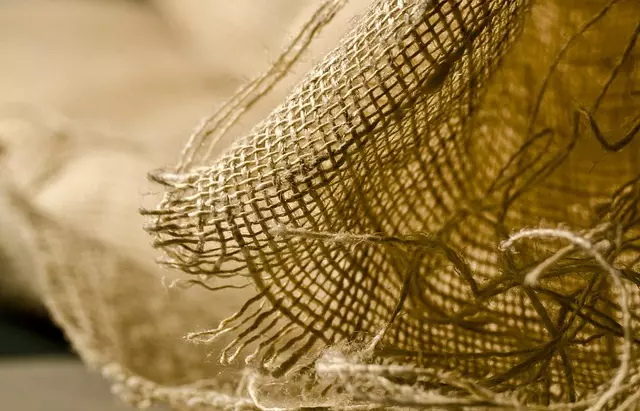Muscle soreness, commonly known as DOMS, often occurs after intense physical activity and is characterized by muscle pain. This condition results from micro-tears in muscle fibers. Kratom, an herbal supplement from Southeast Asia, has been found to potentially alleviate this soreness due to its active compounds, mitragynine and 7-hydroxymitragynine, which interact with opioid receptors in the brain to reduce pain perception. Strains like Maeng Da and Bali are particularly effective for this purpose. However, it is essential to consult healthcare professionals before using kratom due to potential drug interactions and side effects. Kratom offers a natural approach to muscle soreness relief within a holistic recovery plan, but must be used cautiously and responsibly, considering its legal status and purity across different regions. Users should also integrate proper rest, recovery, and adhere to safe usage guidelines to maximize the benefits of kratom for managing post-exercise muscle soreness.
Muscle soreness can be a significant hindrance to individuals engaged in physical activities, from athletes pushing their limits to weekend warriors. Exploring the intersection of muscle recovery and natural supplementation, this article delves into how kratom, a botanical compound, may offer effective relief strategies for those experiencing muscle soreness. We will dissect the scientific mechanisms underlying kratom’s potential benefits, highlighting its role in alleviating post-exercise discomfort. By examining safe and potent muscle soreness relief methods utilizing kratom supplements, readers can better understand how to incorporate this approach into their wellness regimen for optimal recovery and performance.
- Understanding Muscle Soreness and Kratom's Role in Relief
- The Science Behind Kratom's Effect on Muscle Soreness
- Safe and Effective Muscle Soreness Relief Strategies Using Kratom Supplements
Understanding Muscle Soreness and Kratom's Role in Relief

Muscle soreness, often referred to as delayed-onset muscle soreness (DOMS), can be a common occurrence following intense physical activity or exercise. This condition is characterized by pain and tenderness in the muscles that are felt anywhere from a few hours post-exercise to a day or two later. The exact mechanisms behind DOMS are not fully understood, but they are thought to result from microscopic tears in muscle fibers as a response to unaccustomed or intense stress. This inflammatory process can lead to discomfort and impair recovery for subsequent workouts.
Kratom, derived from the leaves of Mitragyna speciosa, has been traditionally used in Southeast Asia for its various medicinal properties, including pain relief. Some research suggests that kratom may offer muscle soreness relief through its interaction with the opioid receptors in the brain, which can reduce pain perception. Specifically, certain alkaloids found within kratom leaves, such as mitragynine and 7-hydroxymitragynine, are believed to contribute to this analgesic effect. Users often report that kratom strains like Maeng Da or Bali can provide relief from muscle soreness when taken in appropriate dosages. It’s important for individuals to consult with healthcare professionals before incorporating kratom into their wellness routines, as it may interact with other medications and has potential side effects. When used responsibly and as part of a comprehensive recovery strategy, kratom can be a viable option for those seeking natural muscle soreness relief.
The Science Behind Kratom's Effect on Muscle Soreness

studies have indicated that kratom, a plant-based supplement derived from Mitragyna speciosa, may offer relief from muscle soreness through its interaction with the body’s opioid receptors. The alkaloids present in kratom leaves, particularly mitragynine and 7-hydroxymitragynine, are believed to modulate pain signals, which can be beneficial for individuals experiencing post-exercise muscle soreness, commonly known as delayed onset muscle soreness (DOMS). This effect is thought to be due to kratom’s agonistic properties at the mu-opioid receptors, which contribute to its analgesic effects. The anti-inflammatory properties of kratom may also play a role in reducing the inflammation associated with muscle soreness. Users who incorporate kratom into their post-workout regimen often report a decrease in pain intensity and an improvement in recovery times. However, it is crucial for individuals to use kratom responsibly and to consult healthcare professionals before incorporating it into their health routines, given its potential for interaction with other medications and its regulatory status varying by region.
Safe and Effective Muscle Soreness Relief Strategies Using Kratom Supplements

Muscle soreness, a common occurrence particularly after intense physical activity or exercise, can be alleviated through various strategies, one of which includes the use of kratom supplements. Kratom, derived from the Mitragyna speciosa tree native to Southeast Asia, has been traditionally used for its medicinal properties. Recent studies and user experiences have indicated that certain strains of kratom can provide effective muscle soreness relief due to its natural alkaloids, such as mitragynine and 7-hydroxymitragynine. These active compounds are believed to interact with the body’s opioid receptors, offering pain-relieving effects that can help reduce muscle pain and discomfort.
When incorporating kratom for muscle soreness relief, it is crucial to approach its use responsibly and within the bounds of safety. Users should adhere to recommended dosages and consult with healthcare professionals before integrating kratom into their wellness regimen, especially if they have pre-existing health conditions or are taking other medications. Additionally, the choice of kratom strain can influence the effectiveness of muscle soreness relief; for instance, strains like Maeng Da and Bali are commonly favored for their potent analgesic properties. It is also essential to consider the legality and purity of kratom products, as their availability and quality can vary by region and supplier. By following safe and effective usage guidelines and maintaining an active lifestyle balanced with rest and recovery, kratom supplements can be a valuable addition to one’s muscle soreness relief strategies.
muscle soreness, kratom supplements, relief strategies, scientific evidence, muscle recovery
In conclusion, muscle soreness can be a significant hindrance to an active lifestyle, but the potential for relief through kratom supplements offers a promising avenue for those seeking effective and natural remedies. The scientific community has shed light on how certain compounds within kratom may interact with the body’s systems to alleviate muscle soreness, making it a noteworthy option in muscle recovery regimens. By understanding the role of these supplements and employing them judiciously as part of an integrated approach to wellness, individuals can navigate their path towards comfort and mobility. It is imperative to approach the use of kratom with caution, adhering to recommended dosages and consulting healthcare professionals to ensure its safe and effective incorporation into a muscle soreness relief strategy. With careful consideration and responsible usage, kratom supplements may serve as a valuable tool in managing muscle soreness.






